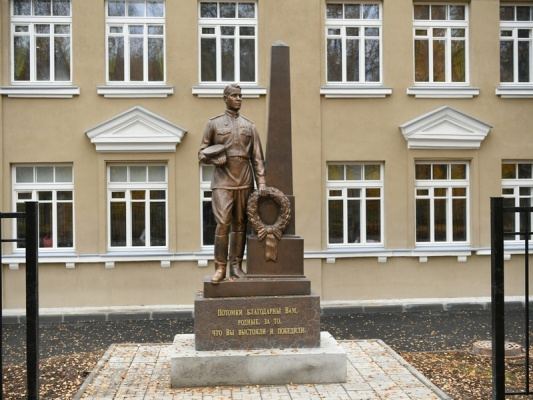Museum History
Belomorsk is a city with a rich history. Traditional crafts have long been practiced on the shores of the White Sea, and during the years of industrialization the district became one of the centers of railway communication. However, peaceful development was interrupted with the beginning of the Great Patriotic War. Belomorsk became the frontline capital of Karelia. By the winter of 1942, the government, party governing bodies, as well as the headquarters of the Karelian Front and the partisan movement in Karelia were located here. During the war, the White Russians worked tirelessly – everything for Victory.
One of the significant objects of Belomorsk was a school located on Bankovaya Street, near the beautiful Pashkov Park. The building, built in the 1930s, became the headquarters of the Karelian Front during the war. During the long four years of struggle, it was in this former school that the Svir-Petrozavodsk and Petsamo-Kirkenes operations were developed. Years later, the building became dilapidated and deserted.
In 2020, it found a new life: The Karelian Front Museum was opened in it, which absorbed the best Russian and international museum practices.
The visitor will find ten halls dedicated to each section of the Karelian Front – you will visit the banks of the Tuloksa in the hot summer of 1944, in the cold barracks of a concentration camp, on Petrozavodsk Street during the dramatic defense in the autumn of 1941, in a German dugout near Kestenga, at the Victory Parade in June 1945. You will learn the specifics of the war on the Karelian Front – the longest front during the Great Patriotic War.
Exposition
The idea of creating a museum dedicated to the history of the Karelian Front was supported by the State Commission on Preparations for the 100th Anniversary of Karelia and in December 2017 this initiative was approved by Russian President Vladimir Putin. The building, where the headquarters of the Karelian Front was located during the war, was reconstructed with the replacement of all engineering networks and landscaping of the surrounding area. At the final stage of the renovation of the building, a team of expositionists entered it, among whom were future employees of the museum.
To date, the main exposition of the Karelian Front Museum has 10 halls located geographically. Museum visitors can visit the shore of Lake Ladoga during the landing, see the Finnish fortifications in the Olonets and Medvezhyegorsk area, learn about the battles for the capital of Karelia - Petrozavodsk, get acquainted with the brutal regime of Finnish concentration camps, visit the Kola Peninsula during the war. Exhausting labor in the rear, the feat of the Kaimanov border detachment, sabotage operations of both Finns and Soviet special services, the tragedy of Grigoriev's partisan detachment, the desperate defense of the Kola Peninsula, the fate of Lend-Lease Arctic convoys - this is an incomplete list of topics touched upon by the permanent exhibition of the Karelian Front Museum.
The Karelian Front Museum invites guests and residents of Karelia to get acquainted with the exposition dedicated to the history of the Great Patriotic War in the North-West of Russia.
The exposition tells about the general features and peculiarities of the longest front, its complex climatic and landscape conditions. During the war, Belomorsk became the frontline capital of Karelia. The government, party governing bodies, as well as the headquarters of the Karelian Front and the partisan movement of Karelia are located here.
One of the significant objects of Belomorsk was a school located on Bankovaya Street, near the beautiful Pashkov Park. The building, built in the 1930s, became the headquarters of the Karelian Front during the war.
The visitor is waiting for an exposition that will "transfer" to the harsh, sometimes cruel years of the war. Ten halls dedicated to each section of the Karelian Front. The Karelian Front Museum is aimed at different categories of visitors. Thematic excursions, classes and master classes have been developed. The Karelian Front Museum invites visitors to a dialogue about important events of our republic.
Mode of operation of the museum:
Tuesday - Sunday: 10:00 a.m. - 6:00 p.m.
Monday is a day off.
On holidays the museum works by prior request.
Inquiries and ordering tours: 55-96-55 (ext.165)
Address: Republic of Karelia, Belomorsk, Bankovskaya str., 26
Phone: (8142) 55-96-60 (ext.165), 8-911-438-84-37
E-mail:karfront@mail.ru
Head of the branch: Sergey Yurievich Koriganov


